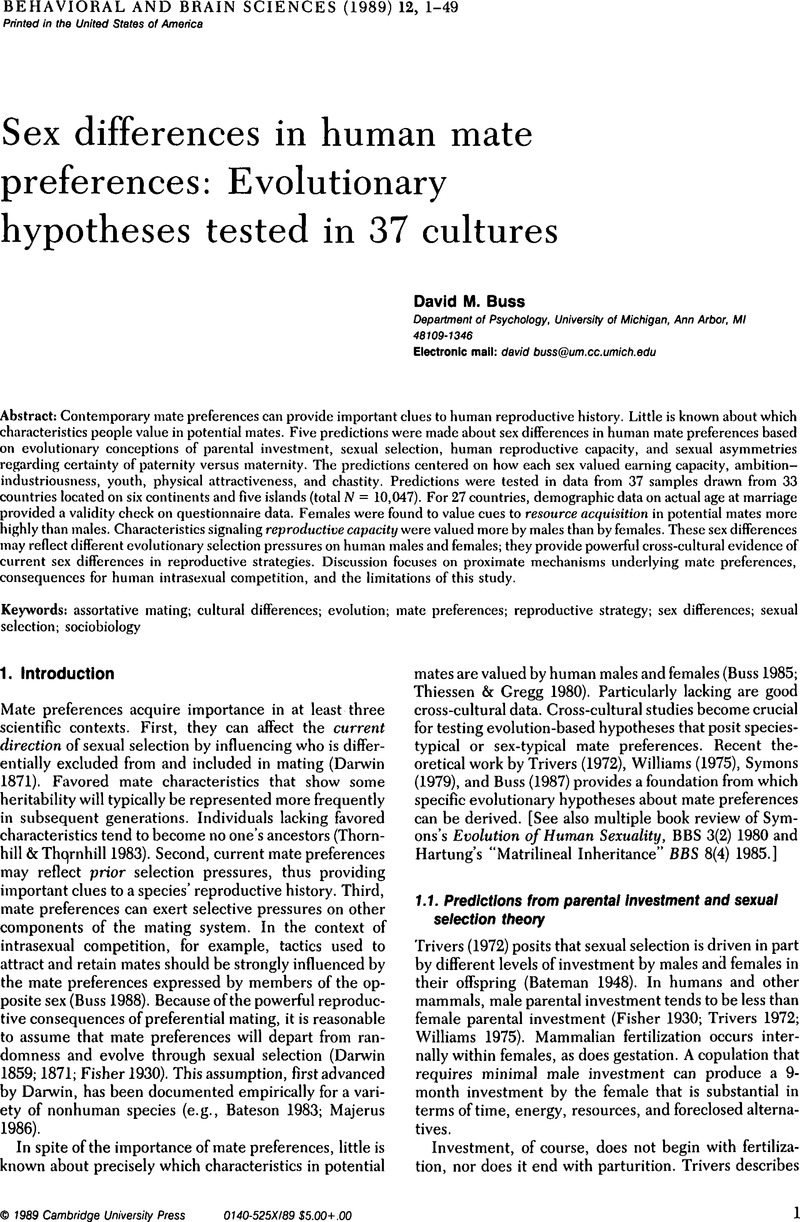Crossref Citations
This article has been cited by the following publications. This list is generated based on data provided by Crossref.
Tooby, John
and
Cosmides, Leda
1990.
The past explains the present.
Ethology and Sociobiology,
Vol. 11,
Issue. 4-5,
p.
375.
2000.
Sex Differences.
p.
379.
McKinnon, Susan
2001.
A obliteração da cultura e a naturalização da escolha nas confabulações da psicologia evolucionista.
Horizontes Antropológicos,
Vol. 7,
Issue. 16,
p.
53.
Gottschall, Jonathan
Martin, Johanna
Quish, Hadley
and
Rea, Jon
2004.
Sex differences in mate choice criteria are reflected in folktales from around the world and in historical European literature.
Evolution and Human Behavior,
Vol. 25,
Issue. 2,
p.
102.
Moore, Fhionna R.
and
Cassidy, Clare
2007.
Female Status Predicts Female Mate Preferences Across Nonindustrial Societies.
Cross-Cultural Research,
Vol. 41,
Issue. 1,
p.
66.



